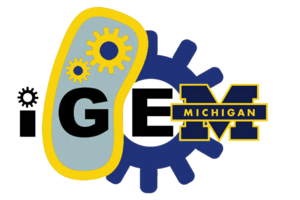Team:Michigan/Safety
From 2011.igem.org
(→Safety) |
(→Safety) |
||
| Line 7: | Line 7: | ||
==Safety== | ==Safety== | ||
| - | 1. | + | 1.'' Would any of your project ideas raise safety issues in terms of:'' |
| - | *researcher safety, | + | *''researcher safety,'' |
| - | *public safety, or | + | *''public safety, or'' |
| - | *environmental safety? | + | *''environmental safety?'' |
Overall, our project is very safe. If we wanted to allow the public to look at our cell patterns, we would have to take precautions to ensure that any viewers would be safe. We have discussed this with the company we get our microarrays from, and we are sure that the microarray slides themselves are safe to work with. | Overall, our project is very safe. If we wanted to allow the public to look at our cell patterns, we would have to take precautions to ensure that any viewers would be safe. We have discussed this with the company we get our microarrays from, and we are sure that the microarray slides themselves are safe to work with. | ||
| - | 2. | + | 2. ''Do any of the new BioBrick parts (or devices) that you made this year raise any safety issues? If yes,'' |
| - | *did you document these issues in the Registry? | + | *''did you document these issues in the Registry?'' |
| - | *how did you manage to handle the safety issue? | + | *''how did you manage to handle the safety issue?'' |
| - | *How could other teams learn from your experience? | + | *''How could other teams learn from your experience?'' |
There are no major safety issues involved with our part. Even though the zinc finger binding domain binds to double-stranded DNA, it will not mutate the DNA in any shape or form (unlike ethidium bromide that goes between the bases of DNA). Additionally our protein that contains the zinc finger is inert, no nuclease activity. | There are no major safety issues involved with our part. Even though the zinc finger binding domain binds to double-stranded DNA, it will not mutate the DNA in any shape or form (unlike ethidium bromide that goes between the bases of DNA). Additionally our protein that contains the zinc finger is inert, no nuclease activity. | ||
Revision as of 22:55, 14 July 2011

Safety
1. Would any of your project ideas raise safety issues in terms of:
- researcher safety,
- public safety, or
- environmental safety?
Overall, our project is very safe. If we wanted to allow the public to look at our cell patterns, we would have to take precautions to ensure that any viewers would be safe. We have discussed this with the company we get our microarrays from, and we are sure that the microarray slides themselves are safe to work with.
2. Do any of the new BioBrick parts (or devices) that you made this year raise any safety issues? If yes,
- did you document these issues in the Registry?
- how did you manage to handle the safety issue?
- How could other teams learn from your experience?
There are no major safety issues involved with our part. Even though the zinc finger binding domain binds to double-stranded DNA, it will not mutate the DNA in any shape or form (unlike ethidium bromide that goes between the bases of DNA). Additionally our protein that contains the zinc finger is inert, no nuclease activity.
3. Is there a local biosafety group, committee, or review board at your institution?
- If yes, what does your local biosafety group think about your project?
- If no, which specific biosafety rules or guidelines do you have to consider in your country?
We take safety seriously on our team. All of our members are required to attend training sessions provided by the Occupational Safety and Environmental Health administration. These sessions deal with General Lab Safety and Autoclave Training. Our team has had meetings in past years with medical faculty to discuss biosafety, and we will plan another meeting this year.
4. Do you have any other ideas how to deal with safety issues that could be useful for future iGEM competitions? How could parts, devices and systems be made even safer through biosafety engineering?
All iGEM teams should go through mandatory lab safety training at a minimum. In order to make parts safer, we could require that each part pass the approval of a “safety committee.” This is not ideal however, because it would slow down the cloning process and would be expensive in terms of time and cost to implement. We could also prepare tests that each part could go through to ensure that they meet safety standards.
 "
"